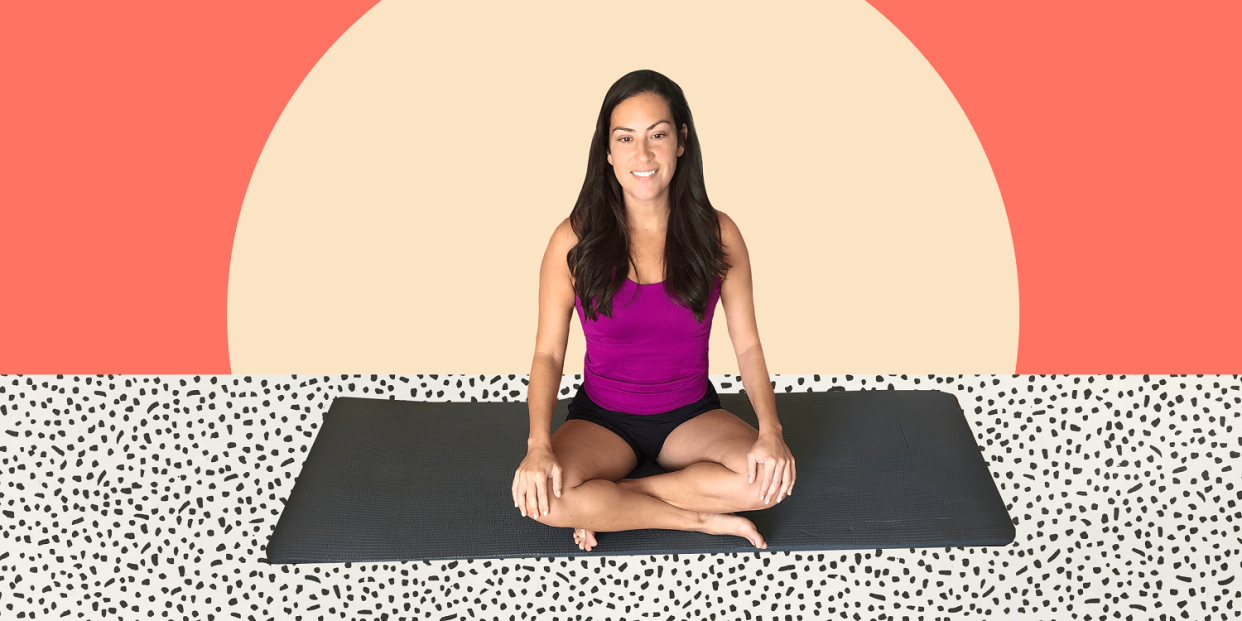Feeling anxious? 6 breathing exercises to help you calm down instantly

If you’ve ever been stressed or anxious (let's be honest, that's all of us at some point), you’ve probably been told to take a deep breath. In the moment, it can be hard to do. Especially if you’re not sure how.
Breathing for relaxation is more than the simple inhale and exhale you do multiple times per minute without thinking too hard about it. Intentional deep breathing exercises which involves a specific techniques are an effective way to calm your nervous system and reduce anxiety.
Whether you’re feeling anxious about an upcoming event or you’ve just had a stressful day, breathing exercises are an easily accessible tool you can lean on to cope. A few minutes focused on your breathing not only helps in the moment but can have cumulative effects over time.
One kind in particular: Yoga breathing has been known to improve quality of sleep and mindfulness, both of which can help to improve mental health.
In fact, I became interested in getting my certification in yoga because of the positive benefits yoga had on my sleep and anxiety levels. I no longer needed my anxiety or sleeping medication once I started practicing yoga regularly. I attribute that mostly to the breathwork that I learned in my yoga classes and practiced daily.
Relaxation techniques, including deep breathing exercises, are an effective way to slow your heart rate, improve quality of sleep, lessen fatigue and ease tension, per the Mayo Clinic.
Ahead, discover six ways to ease your mind and soothe your body with yoga breathing.
What is yoga breathing?
Yoga breathing is more deliberate and controlled than your normal daily breathing. You will breathe in through the nose for a few seconds and then out through the nose for a few seconds, keeping the mouth closed. This is supposed to gather your prana, or energy, and make it more focused. It’s also calming and allows the nervous system to relax.
I’ve prepared a list of my favorite yoga breathing exercises for you to try. Whether you perform them in the morning, before bed or throughout the day (like when you're stuck in that traffic jam), you’ll feel a release of unneeded stress and a sense of calm.
Deep belly breathing

Deep belly breathing utilizes the diaphragm to maximize lung expansion. The movement of the diaphragm naturally controls the airflow through your body, forcing the air to move deeply into your belly. Start in a comfortable position either lying on the floor or sitting in a chair. Place one hand on your chest while placing the other just below the rib cage so that you can feel the movement of your diaphragm. Slowly breathe in through your nose for a count of five. Feel the air move in your body as your stomach rises. Then exhale the air through your mouth for a count of five, feeling your stomach relax inward.
Box breathing
Create a box with your counts during your breathing. This is great for slowing down the mind and quieting racing thoughts by practicing being present in the moment, which helps reduce anxiety. Breathe in as you count to four in your head. Then, hold your breath for four counts. Next, exhale for four counts. I like to use the mental picture of drawing the four sides of a box with each count of my breath. Finally, hold at the bottom for four counts. Repeat this four times and feel your body relax and the tension release from your muscles.
Alternate nostril breathing

Alternate nostril breathing is a little less common than deep belly breathing, but it can be a great way to practice controlled breathing. Plus, this exercise is the perfect addition to any sort of meditation practice. Sit in a comfortable position with your legs crossed. Once you finish exhaling, place your right thumb over your right nostril. Inhale for a count of five through your left nostril. Then, cover your left nostril and uncover your right nostril before exhaling for a count of five. Now, inhale through the right nostril, keeping your thumb on the left nostril. Then, cover your right nostril and exhale through the left. Continue alternating between the nostrils for a few minutes.
Breath retention

Breath retention involves holding your breath without inhaling or exhaling for a period of time. Retaining your breath for a short period of time can help with relaxation and stress reduction. I recommend holding the air in for 10 seconds before exhaling, and then taking a few regular breaths before repeating the exercise. Begin sitting with your legs crossed on the floor. Keeping your back straight, breath in through your nose for five seconds. Hold the air inside your lungs for 10 seconds. Once you’ve reached 10 seconds, exhale slowly through your mouth. Take a few normal breaths before repeating the process.
Lion's breath
Release stress with this fun and invigorating breathing technique. Breathe in for one deep breath and open your eyes wide. Then, open your mouth and stick out your tongue as you blow all the air out of your mouth, making a "haaaa" sound. As you breathe out, you can even contract the muscles around your throat to really feel like a lion!
Breath of fire

The breath of fire involves gently inhaling and forcefully exhaling. This exercise helps relieve stress, improve concentration and increase mindfulness. Sit with your legs crossed on the floor, keeping your back straight. Inhale through your nose for a count of five while placing your hand on your stomach so you can feel it rise. As soon as you finish inhaling, exhale forcefully through your nose, engaging your abdominals. Make sure that your inhale and exhale are the same length, even though they are done with different amounts of force. Repeat this 10 times quickly.
This article was originally published on TODAY.com
